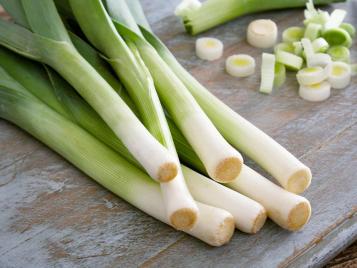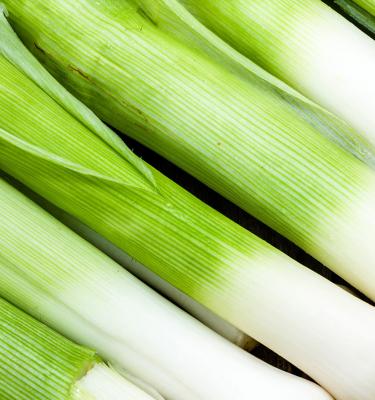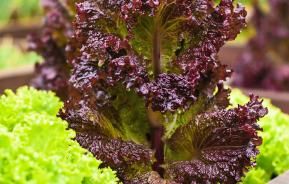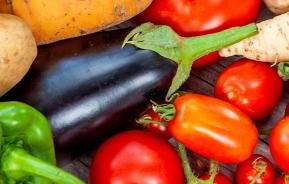Leeks are the easiest member of the onion family to grow and are a fabulous vegetable for winter use, when other veg may be a bit scarce. But by growing different varieties and sowing at different times of year, you can harvest leeks from autumn to spring.
Don’t just boil or steam them - they can be baked (which improves their flavour) with a cheese sauce and added to stews and soups.
How to grow leeks
Cultivation
Leeks prefer a sunny site, but will grow in light shade.
Almost any soil will grow a good crop of leeks, as long as it’s free draining and not compacted. For best results, dig in plenty of compost or well-rotted manure the previous autumn. You can add this a few weeks before planting out, providing it is not too rich in nutrients. Before planting out, add a good soil dressing of a general granular feed.
Leek varieties
For a long supply of leeks, you can sow different varieties at different times:
- Early: For an autumn crop, sow Lyon-Prizetaker or Early Market in March.
- Mid-season: For Christmas and New Year crops, sow Mussleburgh or Snowstar in May.
- Late: For leeks to harvest in March and April, sow Giant Winter or Winter Crop in June.

Sowing leeks
For best results, sow seeds very thinly in a separate seed bed in a shallow drill about 13mm (½in) deep. Cover with soil and water in well.
For a very early crop in late summer or early autumn, sow indoors in cell trays in a heated propagator or on a windowsill in February.
How to care for leeks
When the young plants are 15-20cm (6-8in) tall, they should be transplanted to their permanent cropping position.
Water them well the day before lifting and transplanting. Make 5cm (2in) wide, 15cm (6in) deep holes with a dibber 15cm (6in) apart in rows 30cm (12in) apart and drop a plant into each hole. Fill the hole with water to settle the roots. Top up with water as necessary for the plants to establish, but don’t fill the hole with soil. If you have a lot of plants, you can put 2 or 3 plants into each hole. This way you’ll get lots of smaller leeks.
After a few weeks, you can improve the length of white stem by blanching the plant above ground. Wrap about 10cm (4in) of the base of the plant in newspaper and then pull dry soil around the stem to exclude light. Be careful not to introduce soil between the leaves as this can make for gritty eating.
During extended dry periods, water the plants thoroughly by giving them a good soaking every 7-10 days.
Keep weeds away throughout their growing period by carefully hoeing between the plants.
Harvesting
Carefully lift the leeks as and when needed for the kitchen with a garden fork or hand fork. You can also lift baby leeks when the plants are still quite small to ensure a long harvest period. Leeks will stand throughout the winter without harm.
Pests
Leeks may be susceptible to the following pests and diseases: leek moth, onion white rot.
| Foliage season(s) | Spring, Summer, Autumn, Winter |
|---|---|
| Sunlight | Partial shade, Full sun |
| Soil type | Chalky, Clay, Loamy, Sandy |
| Soil pH | Neutral |
| Soil moisture | Moist but well-drained |
| Ultimate height | Up to 45cm (18in) |
| Ultimate spread | Up to 15cm (6in) |
| Time to ultimate height | 6 months |








